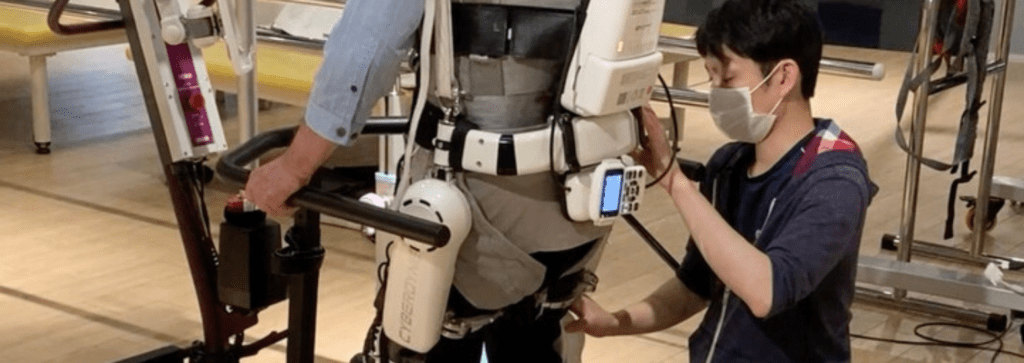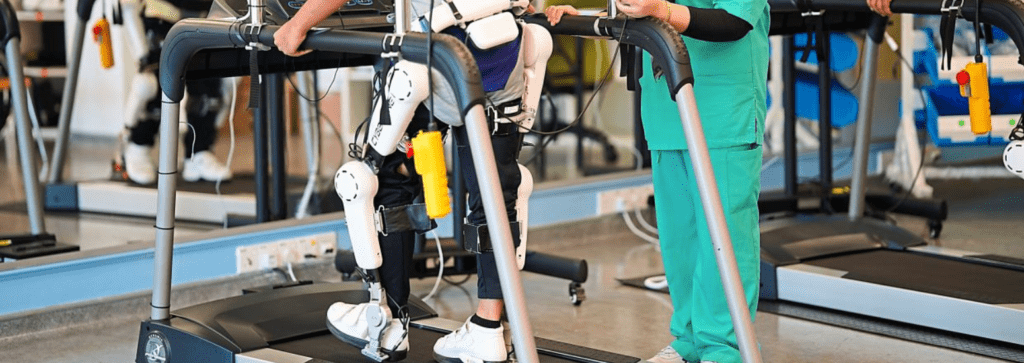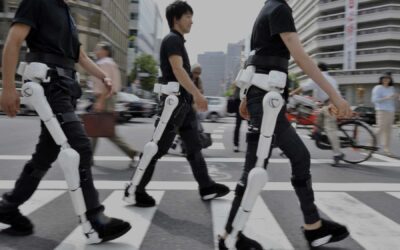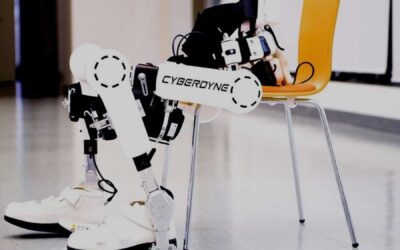Spinal Cord Injury is a prevalent cause of acquired disability globally. Significant changes have been observed in the medical field in recent years, and with the numerous technological breakthroughs, healthcare has achieved remarkable advancements.
The world’s first technology to enhance and regenerate the wearer’s physical functions based on their intentions is the Hybrid Assistive Limb, or HAL®. It is known as The Wearable Cyborg™. The Cyberdyne Treatment utilises HAL to restore the wearer’s functions. HAL enhances the wearer’s function and targets conditions such as spinal cord injury, stroke, neuromuscular diseases, and more. Clinical applications have reported the treatment’s effectiveness in promoting functions of the lower limb, upper limb, and body trunk.
Recovery Process by HAL

The muscle is commanded to move by a signal sent from the brain. A faint signal reflecting the wearer’s intention to move appears on the skin’s surface at that time. HAL® uses sensors attached to the skin’s surface to detect these bio-electrical signals and carry out the desired movements based on the wearer’s voluntary commands.
Cyberdyne’s Robotic device is suitable for assisting in this area due to HAL’s capability to perform simple, repetitive tasks consistently. Robots can be programmed to lead a patient through a series of specific motions while maintaining a prescribed level of support and limiting undesired movements.
Restoration-
Cyberdyne treatment offers advanced rehabilitation technologies to support the well-being of individuals worldwide who have sustained spinal cord injuries.
The Wearable Cyborg™ HAL is designed to enhance motor learning in the brain, ultimately promoting the brain’s neuroplasticity.
HAL® aims to contribute to a better future through the research, development, and production of innovative Cybernics systems, with a specific emphasis on enhancing healthcare, welfare, and everyday life.
A significant portion of Cyberdyne’s robotic technology research is dedicated to lower extremity rehabilitation, particularly beneficial for individuals with spinal cord injuries.
Upon completing the intended movement, HAL® provides feedback to the brain, enabling the wearer to actively engage neural pathways for voluntary movement and receive physical feedback, which is essential for regaining the ability to walk independently.
Mobility after Spinal Cord Injury

Robotic devices used in physical therapy ensure that exercises are executed correctly. They often assist in bearing the patient’s body weight, enabling longer participation without fatigue. They track progress and offer unbiased assessment and reporting. Intelligent, motorised rehabilitation devices, or rehabilitation robotics, mark an exciting frontier with significant potential to address the concerns.
Our Patient Puschel’s Experience
“I want to be able to walk at my daughter’s wedding. The first time I used it, I thought, “This will be great. I’ll be able to walk,” but no! It was very challenging but incredibly rewarding. Initially, the robot had to do all the work for me. Each time I used the robot, I could do a little more until I could do it on my own. When it was time to walk at my daughter’s wedding, I was able to walk down the aisle with a walker.”
Log onto https://rehabmodalities.com/ to understand the science of motor function and neural connections through Cyberdyne’s Wearable Cyborg™ HAL®



